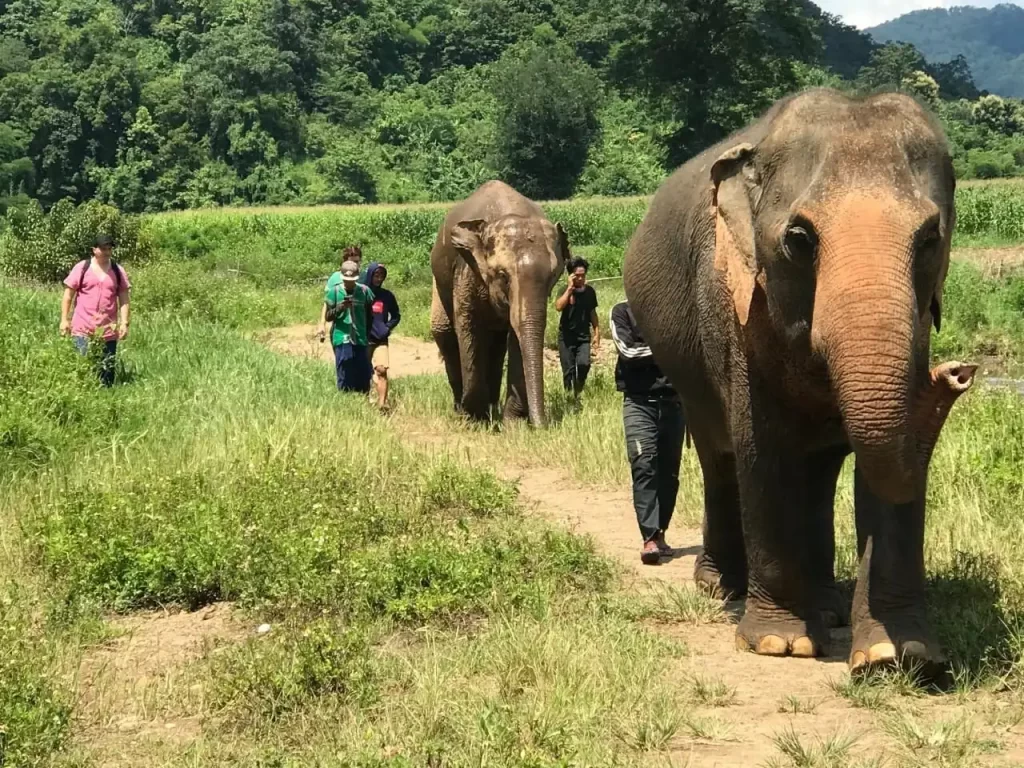
Can You Ride Elephants in Chiang Mai? The Truth Behind the Tourist Experience
If you’re planning a trip to Chiang Mai, there’s a good chance you’ve seen elephant riding tours advertised. Maybe you’ve even thought about booking one. After all, elephants are an iconic part of Thai culture, and riding one through the jungle might sound like the ultimate bucket-list adventure.
But here’s the real question: Can you ride elephants in Chiang Mai — and should you?
The short answer is: Yes, you can. But you shouldn’t.
Let’s examine the history, impact, and evolving tourism landscape in Chiang Mai to help you make an informed, compassionate choice during your visit.
The History of Elephant Riding in Thailand
Elephants have long been part of Thailand’s identity. Historically, they were used in logging operations to haul timber through dense forests. When commercial logging was banned in the late 1980s, many elephants and their handlers (known as mahouts) were left without work or resources.
To survive, some turned to tourism. Elephant camps began offering rides and performances to generate income, capitalizing on tourists’ fascination with these majestic animals. For a while, it seemed like a win-win: visitors got a unique experience, and mahouts could earn a living.
But over time, the hidden cost of elephant rides came to light.
What Tourists Don’t See: The Reality Behind the Ride
To make elephants safe to ride, they often undergo a brutal training process known as “phajaan,” or “the crush.” This practice involves separating a baby elephant from its mother, confining it in a small space, and using fear, pain, and deprivation to break its spirit. It’s devastating to think this happens to one of the most wonderful creatures in the world.
Even after training, elephants used for rides frequently suffer from long working hours, heavy loads, back and joint damage, and limited access to food, water, and social interaction. The physical and psychological toll is enormous.
Tourists rarely see this side of the experience. They see decorated elephants, trained to follow cues and carry passengers. What they don’t see is the trauma that made that behavior possible.

Why Elephant Riding Still Exists in Chiang Mai
Despite growing awareness, elephant riding persists. Some camps continue the practice due to ongoing demand from uninformed tourists and tour operators stuck in outdated models. Many of these establishments market themselves as sanctuaries but still offer rides or allow direct contact that causes stress to the animals.
The economics of tourism play a role, too. A single elephant can bring in thousands of dollars a month for a riding camp. For mahouts and business owners with limited resources, ethical change can be slow and difficult without external support or incentives.
Ethical Elephant Sanctuaries in Chiang Mai
Fortunately, Chiang Mai has become a global leader in ethical elephant tourism. In recent years, a number of sanctuaries have emerged that prioritize elephant health, dignity, and natural behavior. These places have created a new model of wildlife tourism rooted in observation, education, and respect.
Instead of riding elephants, visitors watch them forage, bathe in rivers, and interact with their companions. The focus is no longer on what the animal can do for us, but on what we can learn from them.
The success of these sanctuaries shows that tourism and conservation can coexist. And when done right, the experience is far more meaningful.
What Makes an Elephant Sanctuary Ethical?
Not all elephant sanctuaries are created equal. Here are a few signs that a facility is truly ethical:
- No riding, chains, or forced performances
- Limited group sizes and hands-off policies
- Focus on education and conservation
- Partnerships with local communities
- Qualified veterinary care and enrichment programs
If an elephant sanctuary offers rides, painting, or tricks, it’s likely prioritizing profits over welfare. We recommend doing your research, reading reviews, and looking for transparency in its practices.

A Look Inside the Elephant Freedom Project
At the Elephant Freedom Project, located in the Mae Wang district just outside Chiang Mai, our approach is simple: let elephants be elephants.
Our sanctuary does not offer elephant rides, shows, or direct interaction. Guests are invited to observe these incredible animals in their natural environment. Visitors can watch as they splash in the river, take dust baths, or snack on bamboo in the jungle. Small group sizes ensure a peaceful atmosphere for both elephants and humans.
Many of the elephants in our care have been rescued from tourism or labor industries and are now on a path to recovery. Our team works closely with local mahouts and veterinarians to provide daily enrichment and specialized medical treatment for each elephant.
A visit to our sanctuary is about learning, connecting, and supporting a better way forward.
The Role of Travelers in Ending Elephant Riding
Tourism drives change. The more visitors choose to support ethical sanctuaries, the faster exploitative practices will fade. Every ticket bought, every story shared, and every photo posted online can shift the narrative.
Here’s how you can help:
- Say no to elephant rides and performances
- Support certified ethical sanctuaries
- Educate others about responsible travel
- Leave positive reviews for ethical experiences
- Ask questions before booking any animal activity
Change happens when travelers lead with compassion and curiosity.
Can You Ride Elephants in Chiang Mai?
Final Thoughts: Ride or Respect?
Yes, you can ride an elephant in Chiang Mai. But now that you know what that means, we hope you choose not to.
Elephants are intelligent, emotional creatures with complex social lives and deep memories. They deserve more than a saddle and a camera.
Chiang Mai is home to some of the most beautiful, ethical elephant experiences in the world. By choosing observation over exploitation, you’re not just making a better choice for the elephants — you’re making your trip more meaningful.
Ready to experience the future of wildlife tourism? Visit the Elephant Freedom Project and discover what happens when you let nature lead.


